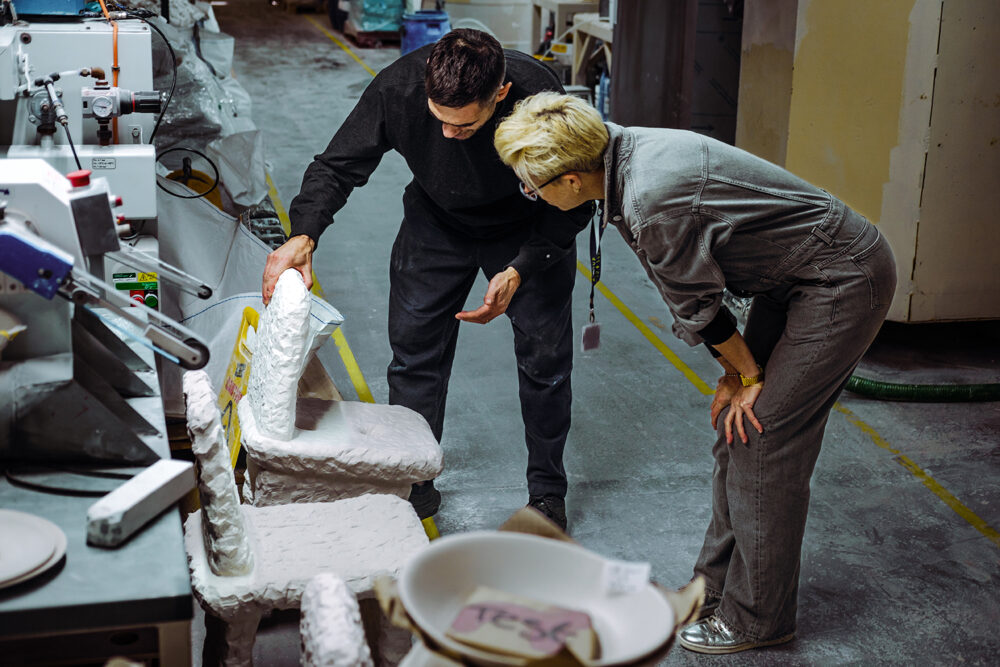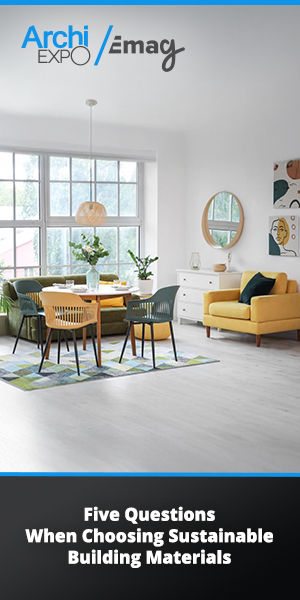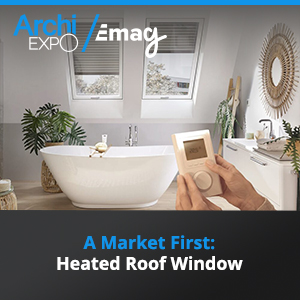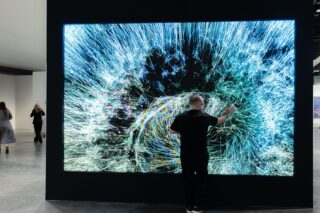Designers are merging material experimentation, wellness-driven innovation, and artisanal craft to shape a more intentional and enduring design culture.
Across the design industry, a quiet but decisive shift is underway. Increasingly, designers are moving beyond questions of surface aesthetics to address deeper cultural concerns: how materials can be reimagined, how everyday objects can shape daily rituals, and how artisanal skills might endure in a mechanized world. This shift is not about trends in the superficial sense, but about a recalibration of values—toward a slower, more tactile, and more intentional design culture.
A walk through this year’s London Design Festival offered a vivid cross-section of this evolution. The festival itself is less the story than the lens: in among the hundreds of displays scattered across districts like Shoreditch and Brompton, a few standout works crystalized these broader themes. Max Lamb’s sculptural ceramic seating, Thomas Heatherwick and Tala’s wellness-focused light, and Henge’s concealed luxury kitchen speak to the direction contemporary design is moving—where materials are pushed beyond their expected roles, where wellbeing is integrated into function, and where craftsmanship is a form of quiet resistance against disposability.
Reimagining Materiality
One of the clearest threads running through contemporary design practice is the rethinking of what materials can do. This is exemplified in Crockery, a new collection by British designer Max Lamb in collaboration with the family-run ceramics house 1882 Ltd. Presented at Gallery Fumi in Mayfair, the collection comprises a series of chairs and stools rendered entirely in slip-cast ceramic.
On paper, the idea sounds improbable. Ceramics, historically, have been treated as decorative surfaces—ornament, glaze, tableware. Rarely are they called upon to bear weight, let alone to form sculptural, functional seating. But Lamb and 1882 Ltd spent years refining a process that allowed them to push ceramic casting to an architectural scale. Working with plaster blocks that Lamb chisels by hand, the team pours liquid clay, lets it set through delicate cycles of temperature-controlled drying, and repeats the casting process multiple times before glazing. The result: solid, weighty forms in pink, white, and black that feel at once primal and futuristic.
“There’s something otherworldly about them,” Lamb noted during his talk at Fumi. “As though they were carved from moon rock rather than slip-cast on earth.”
This is not hyperbole: the rough, faceted surfaces recall geological formations, while the familiar silhouettes—stools, chairs—ground the pieces in everyday functionality.
But what’s most significant is not just the end result, but the logic behind it. This work signals an expanded role for traditional materials in contemporary design. Ceramics are no longer confined to the realm of the delicate and decorative—they are being elevated to structural, load-bearing, and tactile centerpieces. This kind of experimentation suggests a design culture that values both heritage and reinvention.
READ: LDF25’s article “Material revolution: where biology, design and business collide.”
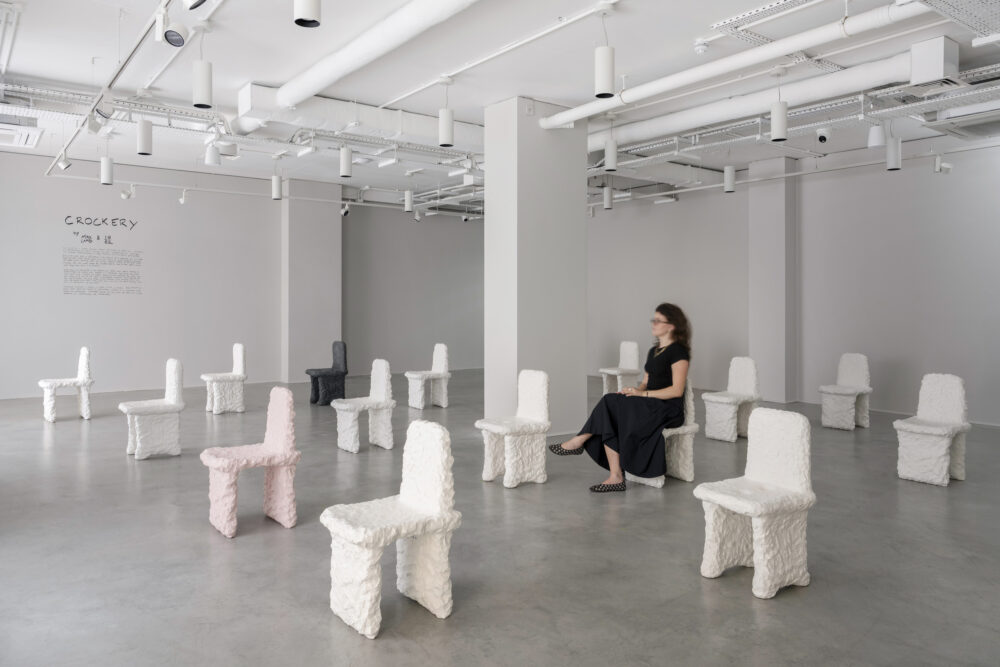
Wellness as a Design Driver
Another current shaping design practice is a sharpened focus on human wellbeing—not as an afterthought, but as a primary driver of concept and execution. Wake, a new light developed by Thomas Heatherwick in collaboration with Tala, is a case in point. The piece consists of a pressed glass orb resting on a hand-glazed ceramic base. But its true innovation lies in what it does, not just how it looks.
“Wake is our attempt to reestablish the sacredness of sleep,” Heatherwick writes in an exhibition pamphlet.
In a world dominated by the blue light of phones and laptops, many people’s circadian rhythms are increasingly out of sync. Research shows that evening screen exposure can suppress melatonin by up to 85 percent, making it harder to fall asleep and degrading sleep quality over time. Wake is designed to counteract that disruption.
At night, the lamp gradually lowers brightness and blue-spectrum light in a “Wind-Down” mode, encouraging the body to prepare for rest. In the morning, “Wake-Up” mode gently increases light levels, mimicking the natural sunrise and pairing it with soft audio in place of a jarring alarm. In essence, the product embeds wellness directly into its functional DNA—an analogue ritual designed to counter digital overload.
This is emblematic of a larger movement: objects are no longer passive. They are being designed to intervene in behavior, supporting healthier rhythms and creating more deliberate daily experiences. In a culture that often prizes efficiency and speed, this turn toward wellbeing signals a more human-centered approach to design.


Craftsmanship and Concealed Luxury
While technology advances, another design current flows in the opposite direction: a return to meticulous craftsmanship. This is perhaps most strikingly embodied in Colonne Cucina, a kitchen system designed by Massimo Castagna for Henge. Displayed in the Brompton Design District, the piece reads less like a kitchen and more like a monumental sculptural installation.
Constructed from rare onyx and pale gold-toned stone with hand-hammered metal doors, the entire kitchen is designed to disappear when not in use. Slide the doors shut and every trace of function—sink, stove, refrigerator, storage—vanishes. What remains is an austere, luminous surface that feels more like architecture than cabinetry.
This philosophy of concealed luxury is paired with a deep commitment to craft. Henge works with artisans in Northern Italy, many of whom employ techniques that are vanishing as consumer demand shifts toward cheaper, mass-produced alternatives. “A single table in our collection can take several months to make,” notes Christina Schmidt, the brand’s London showroom manager. This investment in slowness, in handwork, stands in stark contrast to the pace of most contemporary manufacturing.
More than just aesthetic refinement, this approach speaks to a larger cultural position: luxury today is defined less by conspicuous display and more by the invisible mastery of making.
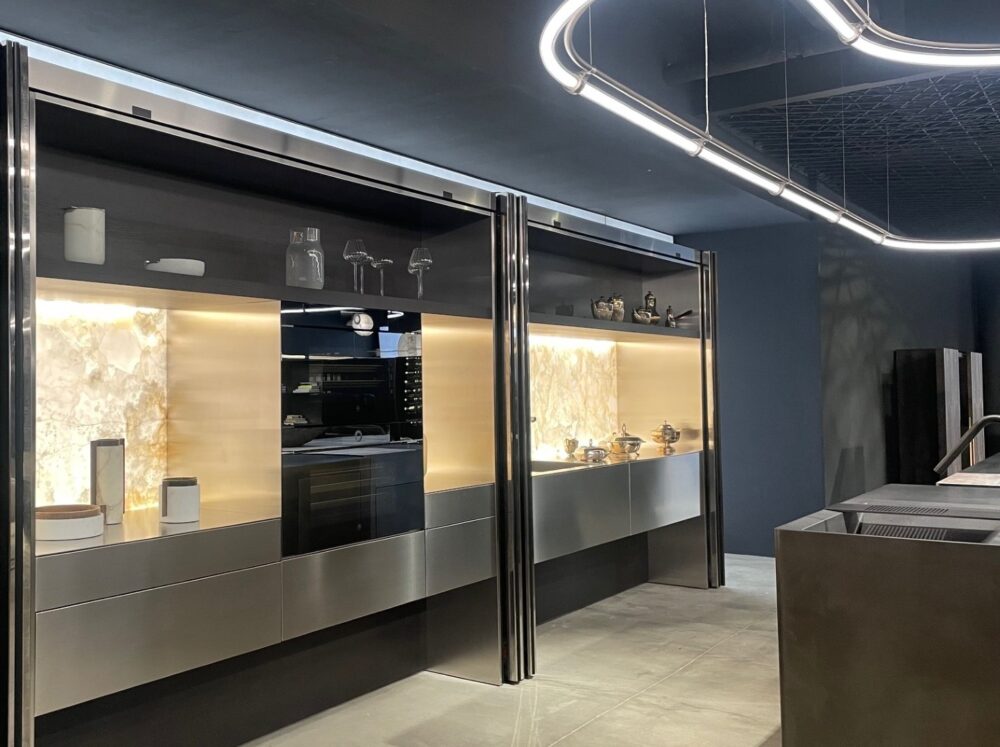

Toward a More Intentional Design Culture
Taken together, these examples reveal more than a set of interesting products. They reveal a set of priorities. Contemporary design is moving toward deeper engagement with materiality, wellness, and craft—not as separate concerns but as overlapping values.
This movement is marked by a redistribution of emphasis: away from purely formal expression and toward process, human experience, and the lifespan of objects. Material experimentation suggests that even familiar substances can yield new possibilities when paired with technical rigor. Wellness-driven design reframes everyday interactions as opportunities for care and restoration. And the renewed appreciation for craftsmanship anchors these innovations in tactile, embodied knowledge.
Events like the London Design Festival don’t create these shifts, but they reflect and amplify them. Scattered across London, the products on display served less as novelties and more as signposts—markers pointing toward a slower, more intentional design culture that values depth over speed, meaning over spectacle.
